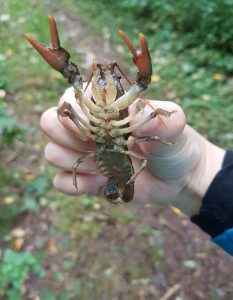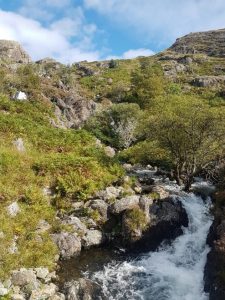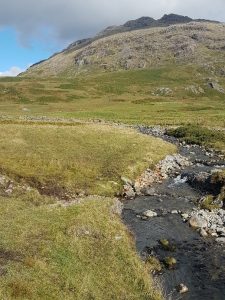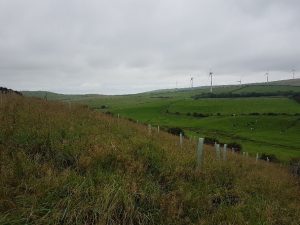Two Months Blog
I am now two months into my role as a Project Officer and have loved learning new aspects of my job, as well as developing my own projects!

Picture: A white-clawed crayfish.
Since last month I have started learning more about Crayfish, something I am really interested in. Cumbria is home the UK’s only native species of crayfish, the White-Clawed Crayfish. This species is at risk due to factors such as pollution, sedimentation, and the spread of the crayfish plague by the invasive Signal Crayfish. To monitor the health, distribution and abundance of the white-clawed crayfish, surveys can be carried out under a crayfish licence. To gain a crayfish licence myself, training with licences officers is required first. So, at the start of the month I went up to help Eden Rivers Trust with some of the final surveys of the year. I spent the day learning how to survey correctly and to identify the age, sex and if a crayfish has any disease.
This month I have also been surveying more of the catchments, scoping and identifying possible future projects. These were primarily in the Duddon catchment. I also visited the Hardknott Forest for my first Natural Land Managers Meeting. This allowed me to meet people from a variety of other organisations to discuss and learn about their projects in the area.

 Alongside working in the Duddon, I have continued to progress with projects around the River Winster and the Poaka reservoir. This includes projects such as installing fencing to create buffer strips. These buffer strips are beneficial as they reduce nutrient runoff through filtration and absorption, mitigate erosion by increasing plant toot depth and provide new habitat.
Alongside working in the Duddon, I have continued to progress with projects around the River Winster and the Poaka reservoir. This includes projects such as installing fencing to create buffer strips. These buffer strips are beneficial as they reduce nutrient runoff through filtration and absorption, mitigate erosion by increasing plant toot depth and provide new habitat.
As well as completing catchment checks to identify new projects, I have also been visiting previous tree planting project sites to assess if they have been successful. Planting trees can enhance a buffer strip alongside a river by creating shade and structure. This is the main aim of our project Cool Rivers, which I have also been working on this month. Shade is important as it reduces the amount of sunlight that reaches the water, mitigating the impacts of climate change. If watercourses increase in temperature, particularly in summer months, negative impacts such as increases in harmful algae and mortality of fish and other biota. The tree roots can also provide habitat for fish, providing refuge from predators. To continue delivering these benefits, we are hoping to plant more trees across South Cumbria’s waterways, and I am now in the process of agreeing new tree planting and woodland creation sites in my target catchments.

Picture: A previous tree planting scheme.
I’m looking forward to updating you all again with my progress next month.
